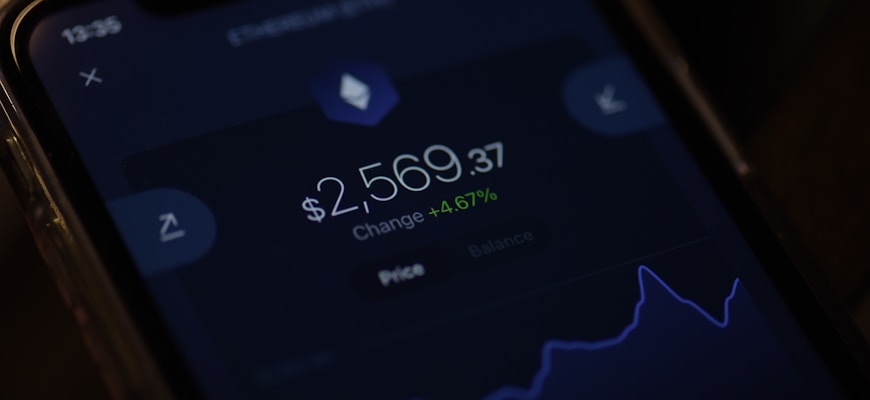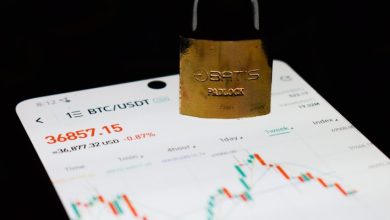How to Use Stop-Loss Orders Effectively in Crypto Trading

- Understanding stop-loss orders and their importance in crypto trading
- Setting up the right stop-loss order strategy for your trading style
- Common mistakes to avoid when using stop-loss orders in crypto trading
- Maximizing profits and minimizing losses with effective stop-loss order placement
- Utilizing advanced techniques to enhance the effectiveness of stop-loss orders
- The psychology behind stop-loss orders and how it impacts trading decisions
Understanding stop-loss orders and their importance in crypto trading
Understanding stop-loss orders is crucial in the world of crypto trading. A stop-loss order is a risk management tool that helps traders minimize potential losses by automatically selling an asset when its price reaches a specified level. This can be especially important in the volatile and unpredictable crypto market, where prices can fluctuate dramatically in a short period of time.
By setting a stop-loss order, traders can protect their investment from sudden price drops and avoid emotional decision-making during times of market turbulence. It allows them to define their risk tolerance and stick to their trading strategy without constantly monitoring the market.
When using stop-loss orders in crypto trading, it is essential to consider factors such as price volatility, market liquidity, and individual risk tolerance. Traders should also be aware of the potential downsides of stop-loss orders, such as slippage and market manipulation.
Overall, stop-loss orders are a valuable tool for crypto traders looking to manage their risk effectively and protect their capital in a highly volatile market. By understanding how stop-loss orders work and implementing them strategically, traders can increase their chances of success and navigate the ups and downs of crypto trading with confidence.
Setting up the right stop-loss order strategy for your trading style
Setting up the right stop-loss order strategy for your trading style is crucial to effectively manage risk in crypto trading. There are several key factors to consider when determining the best approach for setting stop-loss orders.
- 1. **Identify your risk tolerance:** Before setting up stop-loss orders, it’s essential to understand how much risk you are willing to take on each trade. This will help you determine the appropriate stop-loss percentage for your trades.
- 2. **Consider market volatility:** Cryptocurrency markets can be highly volatile, so it’s important to take this into account when setting stop-loss orders. A wider stop-loss percentage may be necessary in more volatile markets.
- 3. **Define your trading style:** Your trading style will also play a significant role in determining the best stop-loss strategy for you. For example, day traders may use tighter stop-loss orders than swing traders.
- 4. **Use technical analysis:** Utilizing technical analysis can help you identify key support and resistance levels where stop-loss orders can be placed. This can help you set more effective stop-loss levels based on market trends.
- 5. **Adjust stop-loss orders:** It’s important to regularly review and adjust your stop-loss orders as market conditions change. This will help you adapt to new market trends and minimize potential losses.
By taking these factors into consideration and setting up a stop-loss order strategy tailored to your trading style, you can effectively manage risk and protect your assets in the volatile world of crypto trading.
Common mistakes to avoid when using stop-loss orders in crypto trading
When using stop-loss orders in crypto trading, there are common mistakes that traders should avoid to prevent unnecessary losses and maximize profits. One mistake to avoid is setting the stop-loss order too close to the entry point. Placing the stop-loss too tight increases the chances of triggering the order prematurely due to normal market fluctuations.
Another common mistake is not adjusting the stop-loss order as the trade progresses. Traders should regularly review their positions and move the stop-loss order to lock in profits or minimize losses based on new market information. Failing to do so can result in missed opportunities or larger-than-expected losses.
It is also essential to avoid setting stop-loss orders based on emotions rather than market analysis. Making decisions out of fear or greed can lead to irrational choices that may not align with the overall trading strategy. Traders should rely on data and market trends rather than emotions when setting stop-loss levels.
Additionally, traders should be cautious about using stop-loss orders during volatile market conditions. In highly volatile markets, stop-loss orders can be triggered quickly, leading to slippage and potential losses beyond the set price. It is crucial to consider the market environment and adjust stop-loss levels accordingly.
Lastly, traders should avoid relying solely on stop-loss orders without considering other risk management strategies. While stop-loss orders can help protect capital, they should be part of a comprehensive risk management plan that includes diversification, position sizing, and setting realistic profit targets. Using stop-loss orders in conjunction with other risk management techniques can help traders navigate the unpredictable nature of the crypto market more effectively.
Maximizing profits and minimizing losses with effective stop-loss order placement
One of the key strategies in crypto trading is maximizing profits and minimizing losses through effective stop-loss order placement. By setting stop-loss orders at strategic levels, traders can protect their investments and ensure they do not incur significant losses in volatile markets.
When placing stop-loss orders, it is essential to consider the overall market trends and the specific behavior of the cryptocurrency being traded. By analyzing historical price data and identifying key support and resistance levels, traders can set stop-loss orders at levels that are likely to limit losses while allowing for potential profit-taking.
It is important to set stop-loss orders at levels that are not too close to the current market price, as this can result in premature triggering of the order due to normal market fluctuations. Traders should also consider the overall risk-reward ratio of their trades when determining the appropriate stop-loss levels.
By implementing a disciplined approach to stop-loss order placement, traders can effectively manage their risk exposure and protect their capital in the highly volatile world of cryptocurrency trading. This strategy can help traders stay profitable over the long term and navigate the ups and downs of the market with confidence.
Utilizing advanced techniques to enhance the effectiveness of stop-loss orders
Enhancing the effectiveness of stop-loss orders in crypto trading can be achieved by utilizing advanced techniques. One such technique is setting a trailing stop order, which allows traders to automatically adjust the stop price based on the market movement. This can help lock in profits while still allowing for potential upside. Additionally, using technical analysis tools such as moving averages or support and resistance levels can help determine optimal stop-loss placement.
The psychology behind stop-loss orders and how it impacts trading decisions
The psychology behind stop-loss orders plays a crucial role in how traders make decisions in the market. When traders set a stop-loss order, they are essentially establishing a predetermined point at which they are willing to exit a trade to limit their losses. This can help alleviate the emotional stress that comes with trading, as it removes the need to constantly monitor the market for price movements.
By setting a stop-loss order, traders are essentially relinquishing control over when to exit a trade, which can be both a blessing and a curse. On one hand, it can prevent impulsive decision-making based on emotions such as fear or greed. On the other hand, it can lead to missed opportunities if the market experiences a temporary dip before rebounding.
Understanding the psychology behind stop-loss orders can help traders make more informed decisions. By recognizing the role that emotions play in trading, traders can set more rational and objective stop-loss levels that align with their risk tolerance and trading strategy.



